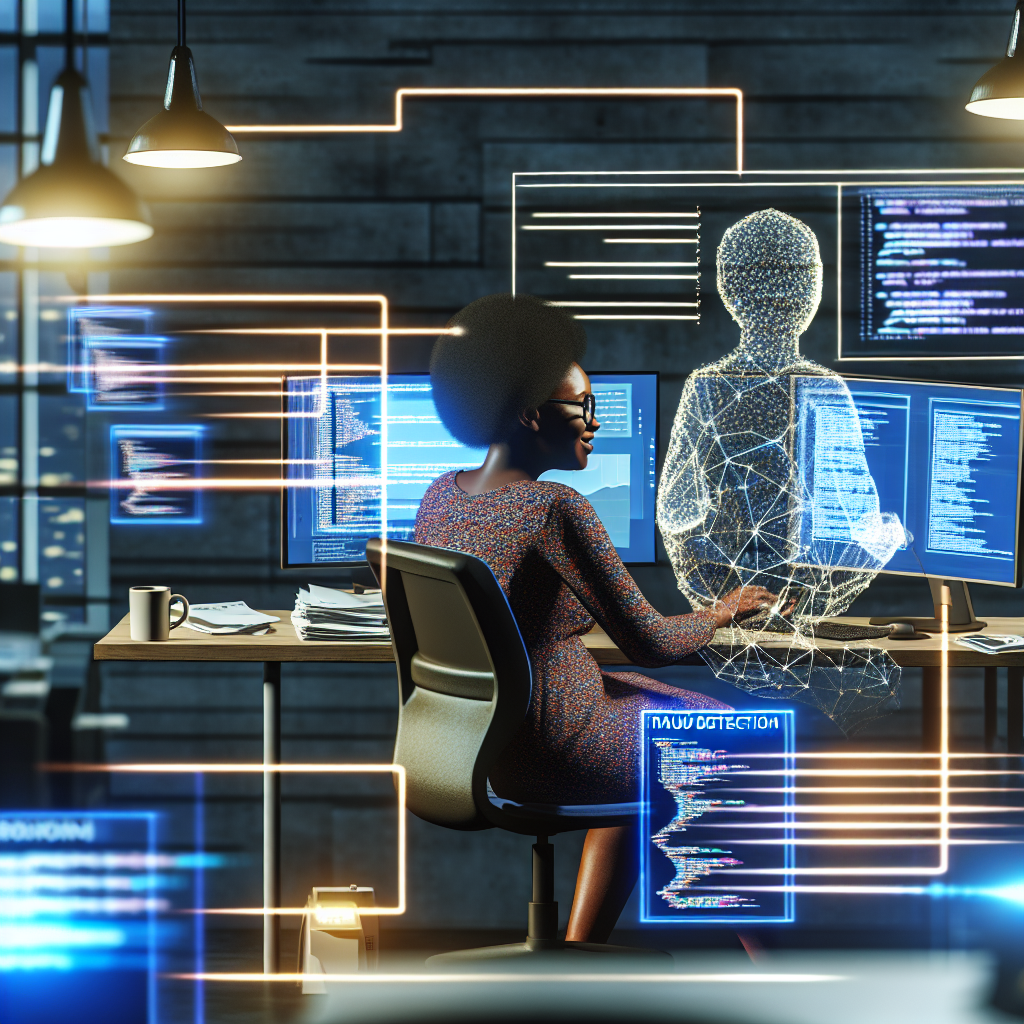Introduction
Definition of Artificial Intelligence (AI)
Artificial Intelligence (AI) refers to the simulation of human intelligence in machines.
These machines mimic human actions and thought processes.
AI systems learn, reason, and solve problems.
They process vast amounts of data to recognize patterns.
AI includes technologies like machine learning and neural networks.
Importance of Understanding AI’s History
Understanding AI’s history is crucial for several reasons:
- Appreciate the Progress: Recognize how far AI has come and its rapid development.
- Learn from the Past: Identify past challenges and mistakes to improve future AI systems.
- Anticipate the Future: Predict future trends by understanding historical patterns.
- Informed Decisions: Make better decisions regarding AI implementation and ethics.
- Educational Value: Gain insights into the evolution of technology and its impact on society.
Overview of the Blog Post
This blog post will cover the significant milestones in AI’s history.
We will explore the early beginnings of AI, including:
- Early Philosophical Thoughts: How ancient history and mythology influenced AI concepts.
- Pioneering Figures: Contributions of key individuals like Alan Turing and John McCarthy.
- Formative Years: Developments from the 1950s to the 1970s, including early AI programs and the Dartmouth Conference.
- Expert Systems Era: The rise and fall of expert systems in the 1980s.
- Machine Learning Boom: The shift to data-driven approaches in the 1990s and early 2000s.
- Deep Learning Revolution: Major advancements in AI during the 2010s, including breakthroughs in image and speech recognition.
- Current Trends and Future Directions: The state of AI in the 2020s and predictions for the future.
Each section will highlight significant events and innovations.
We will also discuss the societal impact of AI and its transformative power.
By the end of this post, you will have a comprehensive understanding of AI’s evolution.
The Early Beginnings of AI
The Concept of AI in Ancient History and Mythology
The concept of artificial intelligence (AI) dates back to ancient history and mythology.
Ancient myths featured mechanical beings with human-like abilities.
Greek mythology introduced Talos, a giant automaton made of bronze.
Talos protected Crete by circling the island and hurling stones at invaders.
Innovative Tech Solutions, Tailored for You
Our leading tech firm crafts custom software, web & mobile apps, designed with your unique needs in mind. Elevate your business with cutting-edge solutions no one else can offer.
Start NowSimilarly, the Jewish legend of the Golem describes a clay figure brought to life to serve its creator.
These stories show that humans have long been fascinated by creating intelligent beings.
Early Philosophical Thoughts on Artificial Beings and Intelligence
Philosophers have pondered artificial beings and intelligence for centuries.
René Descartes, a French philosopher, questioned whether machines could think.
In the 17th century, Descartes argued that only humans possess consciousness and rationality.
Later, Gottfried Wilhelm Leibniz envisioned a universal language for machines.
He believed machines could perform calculations beyond human capabilities.
In the 18th century, the Industrial Revolution inspired further thoughts on intelligent machines.
Philosophers like Thomas Hobbes and George Boole developed theories on logic and computation.
Their ideas laid the groundwork for modern AI.
Alan Turing and the Turing Test (1950)
Alan Turing, a British mathematician, significantly advanced AI. In 1950, Turing introduced the concept of a machine that could think.
He proposed the Turing Test to evaluate a machine’s intelligence.
The Turing Test measures a machine’s ability to exhibit human-like behavior.
In the test, a human interacts with both a machine and another human.
If the human cannot distinguish between the two, the machine passes the test.
Turing’s ideas sparked debates and further research in AI.
He also developed the concept of the universal Turing machine.
This theoretical machine could simulate any algorithm, becoming a foundation for modern computing.
The Dartmouth Conference (1956) – Birth of AI as a Field
In 1956, the Dartmouth Conference marked the official birth of AI as a field.
John McCarthy, Marvin Minsky, Nathaniel Rochester, and Claude Shannon organized the event.
They aimed to explore the possibility of creating intelligent machines.
The conference brought together leading researchers to discuss AI.
Attendees included Allen Newell and Herbert A. Simon, who demonstrated the Logic Theorist program.
This program was an early example of AI that could solve logical problems.
Seamless API Connectivity for Next-Level Integration
Unlock limitless possibilities by connecting your systems with a custom API built to perform flawlessly. Stand apart with our solutions that others simply can’t offer.
Get StartedThe Dartmouth Conference set the stage for future AI research and development.
It established AI as a legitimate scientific discipline.
Key Developments from the Dartmouth Conference
The Dartmouth Conference led to several significant developments:
- Definition of AI: The conference participants coined the term “artificial intelligence”.
- Research Funding: The event attracted funding for AI research from government and private sources.
- AI Programs: Researchers developed early AI programs like the General Problem Solver and SHRDLU.
- AI Languages: John McCarthy developed the LISP programming language, which became essential for AI research.
Legacy of the Dartmouth Conference
The Dartmouth Conference’s legacy endures in modern AI.
It inspired generations of researchers to explore AI’s potential.
The event’s discussions and ideas continue to influence AI research today.
AI has grown from theoretical concepts to practical applications, transforming various industries.
The conference’s pioneering spirit remains a driving force behind AI innovation.
The early beginnings of AI highlight humanity’s long-standing fascination with intelligent beings.
Ancient myths, philosophical thoughts, and pioneering figures like Alan Turing set the stage for AI’s development.
The Dartmouth Conference in 1956 marked the birth of AI as a scientific field.
These early milestones laid the foundation for AI’s rapid advancement and widespread impact.
Understanding AI’s origins helps us appreciate its journey and future potential.

The Formative Years (1950s – 1970s)
Early AI Programs: Logic Theorist and General Problem Solver
In the 1950s, researchers created some of the earliest AI programs.
Allen Newell and Herbert A. Simon developed the Logic Theorist in 1955.
The Logic Theorist was designed to mimic human problem-solving abilities.
It proved 38 of the first 52 theorems in Whitehead and Russell’s Principia Mathematica.
This success marked a significant milestone in AI history.
In 1957, Newell and Simon introduced the General Problem Solver (GPS).
The GPS aimed to solve a wide range of problems using a universal algorithm.
It represented problems as sequences of steps, similar to human problem-solving.
The GPS used means-ends analysis to reduce the difference between the current state and the goal state.
These early AI programs laid the groundwork for future developments.
Development of LISP Programming Language by John McCarthy
John McCarthy significantly contributed to AI by developing the LISP programming language.
Transform Business with Custom CRM & ERP Solutions
Elevate your operations with a CRM or ERP tailored for you. Let’s build the perfect solution that others can't replicate—crafted to match your business's needs like no other.
Get StartedIn 1958, McCarthy introduced LISP, which stands for List Processing.
LISP became the primary language for AI research due to its flexibility.
It supports symbolic reasoning and manipulation, which are essential for AI tasks.
LISP introduced several innovative features:
- Garbage Collection: Automatically manages memory allocation and deallocation.
- Recursion: Allows functions to call themselves, enabling complex problem-solving.
- Dynamic Typing: Flexibly handles different data types without explicit declarations.
LISP’s powerful capabilities made it the language of choice for AI researchers.
It facilitated the development of AI programs and contributed to the field’s growth.
First AI Winter (1974-1980) – Reasons and Impact
The first AI winter occurred between 1974 and 1980.
This period saw reduced funding and interest in AI research.
Several factors contributed to this decline:
- Unmet Expectations: Early AI programs failed to deliver on their ambitious promises.
- Technical Limitations: Computers lacked the processing power and memory needed for advanced AI tasks.
- Complexity: AI problems proved more challenging than anticipated, leading to slow progress.
- Critical Reports: The Lighthill Report in the UK criticized AI’s lack of practical applications.
These challenges led to a decrease in AI research funding from governments and private investors.
The AI winter significantly impacted the field, halting many projects and slowing progress.
Researchers faced difficulties in advancing their work due to limited resources.
Legacy and Lessons Learned
Despite the AI winter, the formative years left a lasting legacy.
Early AI programs demonstrated the potential of machine intelligence.
They inspired future generations of researchers to continue exploring AI.
The development of LISP provided a robust tool for AI research.
It remains influential in modern AI programming.
The AI winter also taught valuable lessons:
- Manage Expectations: Realistic goals are essential to maintain support and funding.
- Technical Advancements: Continuous improvement in hardware and software is crucial for AI progress.
- Interdisciplinary Collaboration: Combining insights from different fields can address complex AI challenges.
These lessons helped shape the future of AI research, leading to more sustainable progress.
The formative years of AI from the 1950s to the 1970s were marked by significant achievements and challenges.
Early AI programs like the Logic Theorist and General Problem Solver laid the foundation for future advancements.
John McCarthy’s development of LISP revolutionized AI programming.
The first AI winter highlighted the need for realistic expectations and continuous technical improvement.
These formative years set the stage for AI’s eventual resurgence and ongoing evolution.
Understanding this period provides valuable insights into AI’s development and future potential.
The Rise of Expert Systems (1980s)
Definition and Examples of Expert Systems
In the 1980s, expert systems became a major focus in AI research.
Tailored Tech Solutions to Drive Your Business Forward
Maximize your business potential with custom tech strategies. We deliver bespoke solutions that others can’t match, designed to solve your specific challenges with precision and impact.
Contact UsExpert systems simulate the decision-making ability of human experts.
They use a knowledge base and an inference engine to solve specific problems.
These systems rely on rules and facts encoded by domain experts.
Several expert systems gained prominence during this era:
- MYCIN: Developed at Stanford, MYCIN diagnosed bacterial infections and recommended antibiotics. It achieved accuracy comparable to human experts.
- DENDRAL: Also from Stanford, DENDRAL analyzed chemical compounds. It helped chemists identify molecular structures based on mass spectrometry data.
- PROSPECTOR: This system assisted geologists in mineral exploration. It evaluated geological data to predict the likelihood of finding ore deposits.
- XCON: Developed by Digital Equipment Corporation, XCON configured computer systems. It ensured that hardware and software components were compatible.
These examples illustrate the diverse applications of expert systems across various fields.
Commercial Success and Industrial Applications
Expert systems achieved notable commercial success in the 1980s.
Companies adopted these systems to improve efficiency and decision-making processes.
Expert systems found applications in multiple industries:
- Healthcare: Medical diagnosis and treatment recommendation systems improved patient care.
- Finance: Expert systems assisted in credit evaluation, fraud detection, and investment analysis.
- Manufacturing: Systems optimized production processes, quality control, and inventory management.
- Telecommunications: Network management systems enhanced the reliability and performance of telecommunications networks.
- Customer Service: Automated customer support systems provided accurate and timely responses to queries.
The commercial success of expert systems led to increased investment in AI research.
Businesses recognized the potential of AI to enhance operations and reduce costs.
Limitations and the Second AI Winter (Late 1980s)
Despite their success, expert systems faced significant limitations.
These limitations eventually contributed to the second AI winter in the late 1980s:
- Knowledge Acquisition: Extracting and encoding expert knowledge proved challenging and time-consuming. Experts often found it difficult to articulate their decision-making processes.
- Maintenance: Keeping knowledge bases up-to-date required continuous effort. Changes in domain knowledge necessitated frequent updates.
- Scalability: Expert systems struggled with complex, large-scale problems. The rule-based approach became less effective as problem complexity increased.
- Flexibility: These systems lacked the ability to learn and adapt. They could not handle situations outside their predefined knowledge base.
- Computational Limitations: The hardware of the time limited the performance and speed of expert systems.
These limitations led to a decline in enthusiasm for AI.
Funding and research support decreased, resulting in the second AI winter.
Researchers faced challenges in advancing AI due to reduced resources and interest.
Legacy and Lessons Learned
The rise of expert systems left a lasting impact on AI.
They demonstrated the potential of AI to solve real-world problems.
The success of expert systems spurred further interest in AI research and development.
Several lessons emerged from this era:
- Interdisciplinary Collaboration: Combining expertise from different fields enhances AI system development.
- Continuous Improvement: AI systems require ongoing updates and maintenance to remain effective.
- Flexibility and Learning: Future AI systems need the ability to learn and adapt to new information.
- Balanced Expectations: Managing expectations is crucial to sustain support and investment in AI research.
These lessons informed subsequent AI research, leading to more robust and adaptive AI systems.
The rise of expert systems in the 1980s marked a significant milestone in AI history.
These systems achieved commercial success and found applications across various industries.
However, their limitations led to the second AI winter in the late 1980s.
The lessons learned from this era continue to shape AI research and development.
Understanding the rise and fall of expert systems provides valuable insights into AI’s evolution and future potential.
The Advent of Machine Learning (1990s – Early 2000s)
Shift from Rule-Based Systems to Data-Driven Approaches
In the 1990s, AI research shifted from rule-based systems to data-driven approaches.
Rule-based systems relied on pre-defined rules and expert knowledge.
They struggled with complex, large-scale problems and required constant updates.
Data-driven approaches, however, learned patterns from data, enabling more flexible and scalable solutions.
Machine learning (ML) became the cornerstone of this new paradigm.
ML algorithms used statistical methods to learn from data, improving their performance over time.
Introduction and Significance of Neural Networks
Neural networks gained prominence during this period.
Inspired by the human brain, neural networks consisted of interconnected nodes or neurons.
Each neuron processed input data and passed it to the next layer.
This structure allowed neural networks to model complex, non-linear relationships.
The introduction of backpropagation was a game-changer.
Backpropagation optimized the weights of neurons, reducing errors and improving accuracy.
Researchers used neural networks for various tasks, such as image recognition and speech processing.
Their ability to learn and adapt made neural networks a powerful tool in AI.
Development of Support Vector Machines and Other Algorithms
Support Vector Machines (SVMs) emerged as a popular ML algorithm in the 1990s.
SVMs classified data by finding the optimal hyperplane that separated different classes.
They proved effective for both linear and non-linear classification tasks.
SVMs used kernel functions to handle non-linear data, enhancing their versatility.
Other significant algorithms included:
- Decision Trees: These algorithms split data into branches based on feature values, making them easy to interpret.
- Random Forests: An ensemble method that combined multiple decision trees to improve accuracy and reduce overfitting.
- K-Nearest Neighbors (KNN): A simple, instance-based algorithm that classified data points based on their nearest neighbors.
- Naive Bayes: A probabilistic classifier that assumed feature independence, making it efficient for high-dimensional data.
These algorithms expanded the toolkit available to researchers, enabling diverse applications in various domains.
Breakthroughs in Natural Language Processing (NLP)
The 1990s and early 2000s witnessed significant advancements in Natural Language Processing (NLP).
NLP aimed to enable machines to understand and generate human language.
Early rule-based NLP systems struggled with the complexities of natural language.
Data-driven approaches transformed NLP by leveraging large text corpora for training.
Key breakthroughs in NLP included:
- Hidden Markov Models (HMMs): Used for tasks like speech recognition and part-of-speech tagging. HMMs modeled sequences of words or phonemes, capturing temporal dependencies.
- Maximum Entropy Models: Employed for text classification and sequence labeling. These models maximized the entropy of the distribution, ensuring a flexible fit to the data.
- Conditional Random Fields (CRFs): Improved sequence labeling tasks by considering the entire input sequence, enhancing accuracy.
- Latent Semantic Analysis (LSA): Reduced the dimensionality of text data, capturing semantic relationships between words.
These advancements propelled NLP forward, enabling applications like machine translation, sentiment analysis, and information retrieval.
Impact and Legacy
The advent of machine learning transformed AI research and applications.
Data-driven approaches replaced rigid rule-based systems, offering more flexibility and scalability.
Neural networks and other ML algorithms provided powerful tools for modeling complex relationships.
Breakthroughs in NLP paved the way for more sophisticated language understanding and generation.
This period laid the foundation for modern AI.
The lessons learned and techniques developed during this time continue to influence current AI research.
Understanding this era is crucial for appreciating the rapid progress and potential of AI.
The 1990s and early 2000s marked a pivotal shift in AI, with the advent of machine learning.
Data-driven approaches, neural networks, and novel algorithms revolutionized AI research.
Breakthroughs in NLP expanded the possibilities for language-related applications.
These milestones set the stage for the current and future advancements in AI, showcasing the transformative power of machine learning.
Read: The Role of Artificial Intelligence in Speech Recognition Technology
The Age of Deep Learning (2010s)
Emergence of Deep Learning and Neural Networks
The 2010s marked the age of deep learning and neural networks.
Deep learning, a subset of machine learning, utilized multi-layered neural networks.
These networks, known as deep neural networks, excelled at learning from vast amounts of data.
Deep learning revolutionized AI by significantly improving performance across various tasks.
Researchers leveraged GPUs to train complex models, making deep learning feasible and efficient.
Key Milestones: AlexNet and the ImageNet Competition
Several key milestones defined the deep learning era.
AlexNet, developed by Alex Krizhevsky, Ilya Sutskever, and Geoffrey Hinton, was a groundbreaking model.
AlexNet won the ImageNet Large Scale Visual Recognition Challenge (ILSVRC) in 2012.
It outperformed traditional computer vision methods by a significant margin.
AlexNet’s success demonstrated the potential of deep learning for image recognition tasks.
The ImageNet competition became a benchmark for evaluating AI models.
It involved classifying millions of images into thousands of categories.
Success in the ImageNet competition spurred further research and innovation in deep learning.
AlexNet’s architecture, with its deep convolutional layers, inspired many subsequent models.
Applications in Image and Speech Recognition
Deep learning found extensive applications in image and speech recognition.
Convolutional Neural Networks (CNNs) excelled at analyzing visual data.
They achieved state-of-the-art performance in tasks like object detection, segmentation, and face recognition.
Companies like Google, Facebook, and Apple integrated CNNs into their products, enhancing user experiences.
In speech recognition, Recurrent Neural Networks (RNNs) and Long Short-Term Memory (LSTM) networks played a crucial role.
These networks processed sequential data, making them ideal for speech and language tasks.
Deep learning models significantly improved speech-to-text systems, enabling accurate voice assistants like Siri and Alexa.
Advances in NLP with Models like GPT and BERT
Natural Language Processing (NLP) advanced rapidly with deep learning.
Researchers developed powerful models like GPT (Generative Pre-trained Transformer) and BERT (Bidirectional Encoder Representations from Transformers).
These models leveraged transformer architectures, which captured complex language patterns.
- GPT: OpenAI introduced GPT in 2018, revolutionizing text generation. GPT-3, the third iteration, could generate human-like text and perform diverse language tasks. Its ability to generate coherent and contextually relevant text impressed researchers and users alike.
- BERT: Google introduced BERT in 2018, transforming NLP tasks like question answering and sentiment analysis. BERT’s bidirectional training captured context from both directions, enhancing understanding. It achieved state-of-the-art results on multiple NLP benchmarks.
These models significantly improved AI’s language understanding and generation capabilities.
They enabled applications like chatbots, language translation, and content creation.
Impact and Legacy
The age of deep learning revolutionized AI research and applications.
Deep learning models consistently achieved state-of-the-art performance across various domains.
The success of AlexNet and other models spurred innovation and investment in AI.
Image and speech recognition applications became more accurate and widely adopted.
Advances in NLP with models like GPT and BERT transformed language-related tasks.
These models demonstrated AI’s potential to understand and generate human language effectively.
The impact of deep learning extended beyond academia, influencing industries and everyday life.
The 2010s marked a transformative period in AI with the rise of deep learning.
Key milestones like AlexNet and the ImageNet competition showcased deep learning’s potential.
Applications in image and speech recognition benefited from deep neural networks.
Advances in NLP with models like GPT and BERT revolutionized language understanding and generation.
The age of deep learning set the stage for future AI innovations, highlighting the power and potential of deep neural networks.
Understanding this era provides valuable insights into AI’s rapid progress and future possibilities.
Read: The Role of Artificial Intelligence in Business
AI in the 2020s and Beyond
Current Trends: Reinforcement Learning and Generative Models
The 2020s have seen AI advance significantly.
Two prominent trends are reinforcement learning and generative models.
Reinforcement learning trains models through trial and error, rewarding correct actions.
This method excels in dynamic environments like games and robotics.
AlphaGo, developed by DeepMind, famously used reinforcement learning to defeat a world champion Go player.
Generative models, like Generative Adversarial Networks (GANs), create new data from existing data.
GANs consist of two networks: a generator and a discriminator.
The generator creates data, while the discriminator evaluates it.
This process continues until the generator produces realistic data.
GANs generate realistic images, music, and even human-like text.
AI in Healthcare, Autonomous Vehicles, and Robotics
AI is transforming various industries, with healthcare, autonomous vehicles, and robotics leading the way.
- Healthcare: AI assists in diagnosing diseases, predicting patient outcomes, and personalizing treatments. Machine learning models analyze medical images to detect conditions like cancer. AI-powered tools help doctors make more accurate diagnoses and improve patient care. During the COVID-19 pandemic, AI tracked virus spread and developed potential treatments.
- Autonomous Vehicles: Self-driving cars rely on AI for navigation, obstacle detection, and decision-making. Companies like Tesla, Waymo, and Uber invest heavily in autonomous vehicle technology. AI processes data from sensors and cameras to drive safely and efficiently. Autonomous vehicles promise to reduce accidents and improve transportation efficiency.
- Robotics: AI enhances robots’ capabilities, making them more adaptable and intelligent. Robots assist in manufacturing, healthcare, and service industries. They perform tasks ranging from assembling products to assisting in surgeries. AI-driven robots can learn from their environment and improve their performance over time.
Ethical Considerations and the Importance of AI Governance
The rapid advancement of AI raises ethical concerns.
Addressing these concerns is crucial to ensure responsible AI development and deployment.
- Bias and Fairness: AI systems can inherit biases from training data. Ensuring fairness and reducing bias is essential to prevent discrimination.
- Privacy: AI systems often require vast amounts of data, raising privacy concerns. Protecting user data and ensuring transparency are critical.
- Accountability: Determining who is responsible for AI decisions can be challenging. Clear guidelines and regulations are needed to ensure accountability.
- Autonomous Weapons: The development of AI-powered weapons poses significant ethical risks. International agreements are necessary to prevent misuse.
AI governance plays a crucial role in addressing these issues.
Governments, organizations, and researchers must collaborate to create ethical guidelines and regulations.
Promoting transparency, accountability, and fairness ensures AI benefits society responsibly.
Future Directions and Potential Breakthroughs
AI continues to evolve, with several promising directions and potential breakthroughs on the horizon.
- General AI: Researchers aim to develop Artificial General Intelligence (AGI), which can perform any intellectual task humans can. AGI would represent a significant leap in AI capabilities.
- AI and Quantum Computing: Combining AI with quantum computing could solve complex problems faster than classical computers. This synergy promises breakthroughs in cryptography, optimization, and material science.
- AI in Climate Change: AI can help model climate change, predict natural disasters, and optimize resource usage. AI-driven solutions could play a crucial role in mitigating climate change impacts.
- AI and Human-AI Collaboration: Enhancing collaboration between humans and AI can improve decision-making and problem-solving. AI systems that understand human emotions and intentions will facilitate better teamwork.
The 2020s mark a transformative era for AI, characterized by trends like reinforcement learning and generative models.
AI significantly impacts healthcare, autonomous vehicles, and robotics.
Addressing ethical considerations and implementing robust AI governance is crucial for responsible AI development.
Future directions, including AGI, quantum computing, and climate change solutions, hold immense potential.
Understanding current trends and future possibilities ensures we harness AI’s power responsibly and effectively.
Read: The Impact of Artificial Intelligence (AI) on Digital Marketing
Notable Figures in AI History
Contributions of Key Individuals
Several key figures have significantly shaped the development of artificial intelligence.
Their pioneering work laid the foundation for modern AI advancements.
- Alan Turing: Often called the father of computer science, Turing introduced the concept of a machine that could simulate any algorithm. In 1950, he proposed the Turing Test to measure a machine’s ability to exhibit human-like intelligence. Turing’s ideas profoundly influenced the field of AI and computing.
- John McCarthy: McCarthy coined the term “artificial intelligence” in 1956. He organized the Dartmouth Conference, which marked the birth of AI as a scientific discipline. McCarthy also developed the LISP programming language, essential for AI research. His work in AI logic and representation remains influential.
- Marvin Minsky: A founding figure in AI, Minsky co-founded the MIT Media Lab and the MIT AI Laboratory. He developed the first graphical simulator for neural networks and contributed to AI theory. Minsky’s research on perception, vision, and robotics advanced the field significantly.
- Geoffrey Hinton: Hinton’s work on neural networks and deep learning revolutionized AI. He co-invented backpropagation, a key algorithm for training neural networks. Hinton’s research led to breakthroughs in image recognition and natural language processing. His contributions earned him the Turing Award in 2018.
- Yann LeCun: LeCun developed Convolutional Neural Networks (CNNs), which excel in image recognition tasks. He demonstrated their capabilities in handwritten digit recognition. LeCun’s work at Facebook AI Research and NYU has driven significant advancements in deep learning.
- Andrew Ng: Ng co-founded Google Brain, where he pioneered large-scale deep learning projects. His work on neural networks and machine learning popularized AI in academia and industry. Ng also co-founded Coursera, bringing AI education to a global audience.
Impact of Their Work on the Development of AI
The contributions of these individuals have profoundly impacted AI’s development.
Their research and innovations have driven significant advancements and applications in various fields.
- Alan Turing’s Legacy: Turing’s theoretical work laid the groundwork for modern computing and AI. The Turing Test remains a fundamental concept in evaluating machine intelligence. His ideas continue to inspire AI researchers worldwide.
- John McCarthy’s Influence: McCarthy’s organization of the Dartmouth Conference established AI as a scientific discipline. His development of LISP provided a powerful tool for AI research. McCarthy’s work in AI logic and representation continues to shape the field.
- Marvin Minsky’s Contributions: Minsky’s pioneering research advanced AI theory and applications. His development of neural network simulators and work on perception, vision, and robotics have significantly influenced AI. Minsky’s legacy lives on through the institutions he co-founded.
- Geoffrey Hinton’s Breakthroughs: Hinton’s work on deep learning has revolutionized AI. His development of backpropagation and advances in neural networks have driven major breakthroughs. Hinton’s research has significantly improved image and speech recognition systems.
- Yann LeCun’s Innovations: LeCun’s development of CNNs transformed image recognition. His work has enabled significant advancements in computer vision applications. LeCun’s research continues to drive progress in deep learning.
- Andrew Ng’s Contributions: Ng’s work at Google Brain and Coursera has popularized AI and machine learning. His contributions to neural networks and deep learning have influenced both academia and industry. Ng’s efforts have made AI education more accessible worldwide.
The notable figures in AI history have significantly shaped the field’s development.
Alan Turing, John McCarthy, Marvin Minsky, Geoffrey Hinton, Yann LeCun, and Andrew Ng made groundbreaking contributions.
Their work laid the foundation for modern AI advancements and applications.
Understanding their impact helps us appreciate AI’s rapid progress and future potential.
These pioneers continue to inspire and drive innovation in artificial intelligence.

Societal Impact of AI
How AI Has Transformed Various Industries
Artificial Intelligence (AI) has revolutionized numerous industries, driving significant changes and improvements.
- Healthcare: AI enhances diagnostics, predicts patient outcomes, and personalizes treatments. Machine learning models analyze medical images to detect diseases early. AI-powered tools assist doctors in making accurate diagnoses, improving patient care and outcomes. AI also predicts disease outbreaks and tracks pandemics, as seen during COVID-19.
- Finance: AI algorithms detect fraudulent activities, assess credit risk, and automate trading. AI systems analyze large datasets to identify patterns and trends, enabling better decision-making. Robo-advisors provide personalized investment advice, making financial services more accessible.
- Manufacturing: AI optimizes production processes, enhances quality control, and predicts equipment failures. AI-driven robots perform repetitive tasks with precision and speed, increasing efficiency. Predictive maintenance reduces downtime and extends equipment lifespan.
- Retail: AI personalizes shopping experiences, manages inventory, and predicts consumer behavior. Recommendation systems suggest products based on customer preferences and behavior. AI-driven chatbots provide instant customer support, enhancing user experience.
- Transportation: AI powers autonomous vehicles, optimizing routes and improving safety. Self-driving cars reduce accidents and traffic congestion. AI systems manage logistics and supply chains, ensuring timely deliveries.
Benefits and Challenges of AI Integration
Integrating AI offers numerous benefits, but it also presents challenges that must be addressed.
Benefits:
- Efficiency: AI automates repetitive tasks, freeing up human workers for more complex activities.
- Accuracy: AI systems analyze data with high precision, reducing errors in decision-making processes.
- Innovation: AI drives technological advancements, leading to new products and services.
- Accessibility: AI makes services more accessible, such as personalized healthcare and financial advice.
Challenges:
- Bias: AI systems can inherit biases from training data, leading to unfair outcomes. Ensuring fairness and transparency is crucial.
- Privacy: AI often requires vast amounts of data, raising privacy concerns. Protecting user data and ensuring consent is essential.
- Job Displacement: Automation may lead to job losses in certain sectors. Reskilling and upskilling programs are necessary to mitigate this impact.
- Ethical Concerns: AI’s decision-making processes can raise ethical issues. Establishing ethical guidelines and governance is vital for responsible AI use.
The Role of AI in Shaping Future Society
AI will play a pivotal role in shaping the future of society, influencing various aspects of daily life.
- Education: AI-powered tools personalize learning experiences, adapting to individual student needs. Intelligent tutoring systems provide instant feedback, enhancing the learning process. AI also helps in automating administrative tasks, allowing educators to focus on teaching.
- Healthcare: AI will continue to revolutionize healthcare, enabling early disease detection and personalized medicine. AI-driven research will accelerate drug discovery and development. Telemedicine, powered by AI, will make healthcare more accessible to remote areas.
- Workforce: AI will change the nature of work, creating new job opportunities while making some roles obsolete. Emphasis on digital literacy and continuous learning will become crucial. Human-AI collaboration will enhance productivity and innovation.
- Environment: AI can help address environmental challenges, such as climate change and resource management. AI models predict climate patterns, aiding in disaster preparedness. Smart grids and AI-driven energy management systems optimize resource usage.
- Governance: AI will transform governance and public services, improving efficiency and transparency. AI systems analyze data to inform policy decisions, enhancing public welfare. However, ethical considerations and regulations are necessary to ensure responsible use.
AI has transformed various industries, offering significant benefits and posing challenges.
Its integration enhances efficiency, accuracy, and innovation while raising concerns about bias, privacy, and job displacement.
As AI continues to shape future society, it will revolutionize education, healthcare, the workforce, the environment, and governance.
Addressing ethical considerations and implementing robust regulations will ensure responsible AI use, maximizing its positive impact on society.
Understanding AI’s societal impact helps us navigate its future potential and challenges effectively.
Read: Software Evolution: From Early Days to Modern Apps
Conclusion
Recap of the Major Milestones in AI History
Artificial Intelligence (AI) has come a long way, marked by several key milestones:
- Early Beginnings: The concept of AI emerged in ancient myths and philosophical thoughts. Alan Turing introduced the Turing Test in 1950, setting the stage for AI’s development.
- Formative Years (1950s – 1970s): Early AI programs like the Logic Theorist and General Problem Solver demonstrated AI’s potential. John McCarthy developed the LISP programming language, a critical tool for AI research.
- Rise of Expert Systems (1980s): Expert systems like MYCIN and DENDRAL showed AI’s practical applications in healthcare and chemistry.
- Advent of Machine Learning (1990s – Early 2000s): Machine learning shifted AI from rule-based systems to data-driven approaches. Neural networks and support vector machines became popular.
- Age of Deep Learning (2010s): Deep learning revolutionized AI with models like AlexNet and GPT, excelling in image recognition and natural language processing.
- AI in the 2020s: AI continues to transform industries such as healthcare, transportation, and finance, while addressing ethical considerations and governance.
The Continuous Evolution of AI
AI constantly evolves, driven by advancements in technology and research.
Recent trends include reinforcement learning and generative models.
AI’s impact spans various fields, from autonomous vehicles to personalized healthcare.
Future directions like Artificial General Intelligence (AGI) and AI in climate change solutions hold immense potential.
Researchers and developers strive to push AI’s boundaries, making it more powerful and versatile.
Encouragement to Stay Informed About AI Developments
Staying informed about AI developments is crucial in our rapidly changing world.
Understanding AI’s history helps appreciate its progress and potential.
Following current trends and breakthroughs enables informed decisions and ethical considerations.
To stay updated:
- Read: Follow AI-related news, research papers, and books.
- Learn: Take online courses and attend webinars on AI topics.
- Engage: Join AI communities and forums to discuss and share insights.
By staying informed, we can navigate AI’s advancements and challenges effectively.
Embracing AI responsibly ensures it benefits society while mitigating risks.
AI’s journey is far from over, and being part of this journey is both exciting and essential.
Understanding AI’s milestones, evolution, and future directions prepares us for a world increasingly shaped by intelligent machines.
Stay curious, informed, and engaged with AI’s ongoing story.
Additional Resources
For Further Reading:
- The Future of Artificial Intelligence: Predictions for the Next Decade
- The Ethical Considerations of Artificial Intelligence
- The Future of AI: How Artificial Intelligence Will Change the World
Before You Go…
Hey, thank you for reading this blog post to the end. I hope it was helpful. Let me tell you a little bit about Nicholas Idoko Technologies.
We help businesses and companies build an online presence by developing web, mobile, desktop, and blockchain applications.
We also help aspiring software developers and programmers learn the skills they need to have a successful career.
Take your first step to becoming a programming expert by joining our Learn To Code academy today!
Be sure to contact us if you need more information or have any questions! We are readily available.











